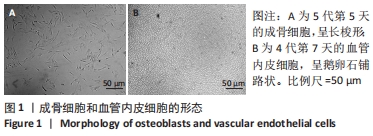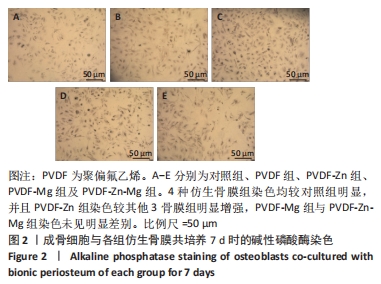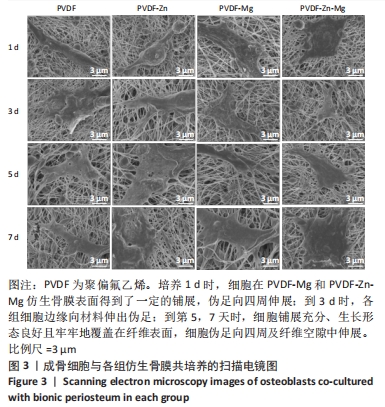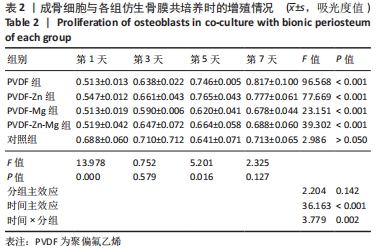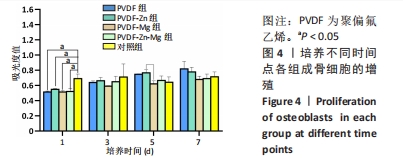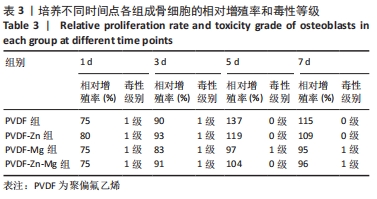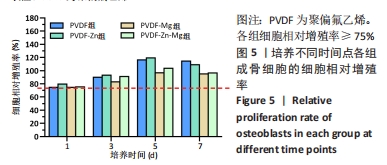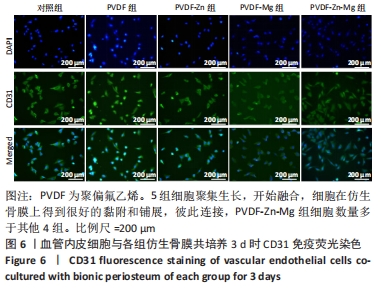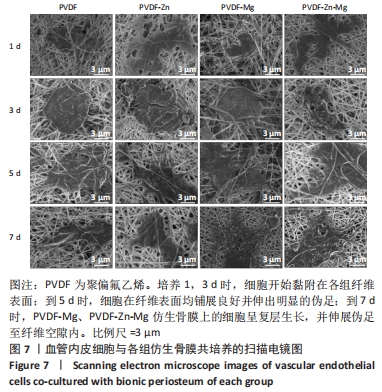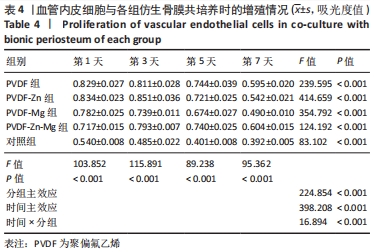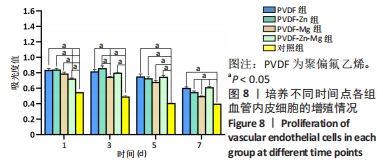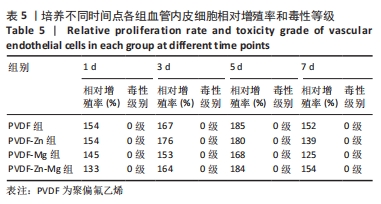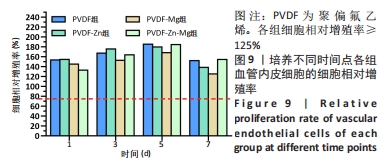[1] 陈海松,柳澄.骨膜反应对骨病变的诊断价值[J].中国中西医结合影像学杂志,2020,18(1):104-108.
[2] ZHANG X, AWAD HA, O’KEEFE RJ, et al. A perspective: engineering periosteum for structural bone graft healing. Clin Orthop Relat Res. 2008;466(8):1777-1787.
[3] WU L, GU Y, LIU L, et al. Hierarchical micro/nanofibrous membranes of sustained releasing VEGF for periosteal regeneration. Biomaterials. 2020;227:119555.
[4] 蒋昇源,宫智浩,宋凯凯,等.骨膜在骨折愈合及骨组织修复过程中的作用[J].中国组织工程研究,2020,24(30):4860-4865.
[5] CHEN X, YU B, WANG Z, et al. Progress of Periosteal Osteogenesis: The Prospect of In Vivo Bioreactor. Orthop Surg. 2022;14(9):1930-1939.
[6] LI H, WANG H, PAN J, et al. Nanoscaled Bionic Periosteum Orchestrating the Osteogenic Microenvironment for Sequential Bone Regeneration. ACS Appl Mater Interfaces. 2020;12(33):36823-36836.
[7] FUKADA E, YASUDA I. On the Piezoelectric Effect of Bone. J Phys Soc Jpn. 2007; 12(10):1158-1162.
[8] HOLLENBERG AM, HUBER A, SMITH CO, et al. Electromagnetic stimulation increases mitochondrial function in osteogenic cells and promotes bone fracture repair. Sci Rep. 2021;11(1):19114.
[9] ZHENG T, HUANG Y, ZHANG X, et al. Mimicking the electrophysiological microenvironment of bone tissue using electroactive materials to promote its regeneration. J Mater Chem B. 2020;8(45):10221-10256.
[10] SAMADI A, SALATI MA, SAFARI A, et al. Comparative review of piezoelectric biomaterials approach for bone tissue engineering. J Biomater Sci Polym Ed. 2022;33(12):1555-1594.
[11] KITSARA M, BLANQUER A, MURILLO G, et al. Permanently hydrophilic, piezoelectric PVDF nanofibrous scaffolds promoting unaided electromechanical stimulation on osteoblasts. Nanoscale. 2019;11(18):8906-8917.
[12] AGHAYARI S. PVDF composite nanofibers applications. Heliyon. 2022;8(11): e11620.
[13] WANG YW, WU Q, CHEN J, et al. Evaluation of three-dimensional scaffolds made of blends of hydroxyapatite and poly(3-hydroxybutyrate-co-3-hydroxyhexanoate) for bone reconstruction. Biomaterials. 2005;26(8):899-904.
[14] CHEN WC, HUANG BY, HUANG SM, et al. In vitro evaluation of electrospun polyvinylidene fluoride hybrid nanoparticles as direct piezoelectric membranes for guided bone regeneration. Biomater Adv. 2023;144:213228.
[15] LAKHKAR NJ, LEE IH, KIM HW, et al. Bone formation controlled by biologically relevant inorganic ions: role and controlled delivery from phosphate-based glasses. Adv Drug Deliv Rev. 2013;65(4):405-420.
[16] MA J, ZHAO N, BETTS L, et al. Bio-Adaption between Magnesium Alloy Stent and the Blood Vessel: A Review. J Mater Sci Technol. 2016; 32(9):815-826.
[17] SU Y, COCKERILL I, WANG Y, et al. Zinc-Based Biomaterials for Regeneration and Therapy. Trends Biotechnol. 2019;37(4):428-441.
[18] ZHAO Z, LI G, RUAN H, et al. Capturing Magnesium Ions via Microfluidic Hydrogel Microspheres for Promoting Cancellous Bone Regeneration. ACS Nano. 2021; 15(8):13041-13054.
[19] MIHAILESCU N, STAN GE, DUTA L, et al. Structural, compositional, mechanical characterization and biological assessment of bovine-derived hydroxyapatite coatings reinforced with MgF2 or MgO for implants functionalization. Mater Sci Eng C Mater Biol Appl. 2016;59:863-874.
[20] MEHRJOU B, DEHGHAN-BANIANI D, SHI M, et al. Nanopatterned silk-coated AZ31 magnesium alloy with enhanced antibacterial and corrosion properties. Mater Sci Eng C Mater Biol Appl. 2020;116:111173.
[21] DIOMEDE F, MARCONI GD, FONTICOLI L, et al. Functional Relationship between Osteogenesis and Angiogenesis in Tissue Regeneration. Int J Mol Sci. 2020;21(9):3242.
[22] 龚鑫,许燕,周建平,等.β 相 PVDF 纤维膜制备及其工艺参数优化[J].工程塑料应用,2022,50(2):82-87.
[23] WILLERSHAUSEN B, MARROQUIN BB, SCHAFER D, et al. Cytotoxicity of root canal filling materials to three different human cell lines. J Endod. 2000;26(12):703-707.
[24] ZHANG F, REN L F, LIN HS, et al. The optimal dose of recombinant human osteogenic protein-1 enhances differentiation of mouse osteoblast-like cells: an in vitro study. Arch Oral Biol. 2012;57(5):460-468.
[25] WU S, DONG T, LI Y, et al. State-of-the-art review of advanced electrospun nanofiber yarn-based textiles for biomedical applications. Appl Mater Today. 2022;27:101473.
[26] UNNITHAN AR, BARAKAT N, PICHIAH P, et al. Wound-dressing materials with anti-bacterial activity from electrospun polyurethane–dextran nanofiber mats containing ciprofloxacin HCl. Carbohydr Polym. 2012; 90(4):1786-1793.
[27] ZOU B, LIU Y, LUO X, et al. Electrospun fibrous scaffolds with continuous gradations in mineral contents and biological cues for manipulating cellular behaviors. Acta Biomater. 2012;8(4):1576-1585.
[28] YANG Z, YI P, LIU Z, et al. Stem Cell-Laden Hydrogel-Based 3D Bioprinting for Bone and Cartilage Tissue Engineering. Front Bioeng Biotechnol. 2022;10:865770.
[29] TANDON B, BLAKER JJ, CARTMELL SH. Piezoelectric materials as stimulatory biomedical materials and scaffolds for bone repair. Acta Biomater. 2018;73:1-20.
[30] SAMADI A, AHMADI R, HOSSEINI SM. Influence of TiO2-Fe3O4-MWCNT hybrid nanotubes on piezoelectric and electromagnetic wave absorption properties of electrospun PVDF nanocomposites. Org Electron. 2019;75:105405.
[31] GUILLOT-FERRIOLS M, RODRIGUEZ-HERNANDEZ JC, CORREIA DM, et al. Poly(vinylidene) fluoride membranes coated by heparin/collagen layer-by-layer, smart biomimetic approaches for mesenchymal stem cell culture. Mater Sci Eng C Mater Biol Appl. 2020;117:111281.
[32] SAMADI A, POURAHMAD S. Flexible piezoelectriccum-electromagnetic-absorbingmultifunctional nanocomposites based on electrospun poly (vinylidene fluoride) incorporated with synthesized porouscore-shellnanoparticles. Int J Energ Res. 2020;(13):44.
[33] HAN J, YANG Y, LU J, et al. Sustained release vancomycin-coated titanium alloy using a novel electrostatic dry powder coating technique may be a potential strategy to reduce implant-related infection. Biosci Trends. 2017;11(3):346-354.
[34] HE Y, ZHANG Y, SHEN X, et al. The fabrication and in vitro properties of antibacterial polydopamine-LL-37-POPC coatings on micro-arc oxidized titanium. Colloids Surf B Biointerfaces. 2018;170:54-63.
[35] WANG X, LIU S, LI M, et al. The synergistic antibacterial activity and mechanism of multicomponent metal ions-containing aqueous solutions against Staphylococcus aureus. J Inorg Biochem. 2016;163:214-220.
[36] SHEN X, ZHANG Y, MA P. Fabrication of magnesium/zinc-metal organic framework on titanium implants to inhibit bacterial infection and promote bone regeneration. Biomaterials. 2019;212:1-16. doi:10.1016/j.biomaterials.2019.05.008.
[37] PRASAD AS. Zinc: an antioxidant and anti-inflammatory agent: role of zinc in degenerative disorders of aging. J Trace Elem Med Biol. 2014;28(4):364-371.
[38] CHENG H, MAO L, XU X, et al. The bifunctional regulation of interconnected Zn-incorporated ZrO2 nanoarrays in antibiosis and osteogenesis. Biomater Sci. 2015;3(4):665-680.
[39] PENG F, WANG D, ZHANG D, et al. PEO/Mg-Zn-Al LDH Composite Coating on Mg Alloy as a Zn/Mg Ion-Release Platform with Multifunctions: Enhanced Corrosion Resistance, Osteogenic, and Antibacterial Activities. ACS Biomater Sci Eng. 2018; 4(12):4112-4121.
[40] RUDE RK, GRUBER HE, NORTON HJ, et al. Dietary magnesium reduction to 25% of nutrient requirement disrupts bone and mineral metabolism in the rat. Bone. 2005;37(2):211-219.
[41] ZREIQAT H, HOWLETT CR, ZANNETTINO A, et al. Mechanisms of magnesium-stimulated adhesion of osteoblastic cells to commonly used orthopaedic implants. J Biomed Mater Res. 2002;62(2):175-184.
[42] HU H, ZHANG W, QIAO Y, et al. Antibacterial activity and increased bone marrow stem cell functions of Zn-incorporated TiO2 coatings on titanium. Acta Biomater. 2012;8(2):904-915.
[43] KIM BS, KIM JS, PARK YM, et al. Mg ion implantation on SLA-treated titanium surface and its effects on the behavior of mesenchymal stem cell. Mater Sci Eng C Mater Biol Appl. 2013;33(3):1554-1560.
[44] 康雯,徐国强,迪丽努尔·阿吉,等.羟基磷灰石/钛酸钡压电陶瓷涂层的体外细胞毒性[J].中国组织工程研究,2014,18(34):5466-5472.
[45] NAGANAWA T, ISHIHARA Y, IWATA T, et al. In vitro biocompatibility of a new titanium-29niobium-13tantalum-4.6zirconium alloy with osteoblast-like MG63 cells. J Periodontol. 2004;75(12):1701-1707.
[46] 林红赛,王春仁,王志杰,等.生物材料的细胞生物相容性评价方法的研究进展[J].中国医疗器械信息,2011,17(9):10-14.
[47] 章晓云,陈跃平,宋世雷,等.丝素蛋白/壳聚糖复合支架有良好的细胞相容性与渗透性[J].中国组织工程研究,2020,24(16):2544-2550.
[48] 韩雪,许亦权,李大伟,等.新型矿化胶原膜的体外细胞相容性评价[J].口腔材料器械杂志,2021,30(4):225-229.
[49] SCHOTT NG, FRIEND NE, STEGEMANN JP. Coupling Osteogenesis and Vasculogenesis in Engineered Orthopedic Tissues. Tissue Eng Part B Rev. 2021; 27(3):199-214. |

